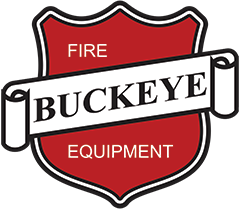FAQs
How do I clean up dry chemical after a fire?
Clean up of the product is best achieved using a vacuum or wet sweep and shovel. Either method will minimize the generation of dust. Bag or drum the product for disposal. If the product has been used on a fire or has become contaminated, use personal protective equipment and containment means that are appropriate for the composition of the mixture.
How do I dispose of dry chemical?
Buckeye dry chemical extinguishing agents are not characteristically hazardous or listed as hazardous waste. Dispose of in accordance with state or local laws, which may be more restrictive than federal regulations. Keep in mind that if the product was used on a fire the characteristics of the waste mixture may have been altered or contaminated. Disposal of this waste may require different disposal considerations. As each situation may be different, Buckeye suggests consulting the appropriate regulatory agency for guidance on disposal.
Are Spot Protection extinguishers refillable?
No. Spot Protection units are considered disposable and should be replaced after use or twelve years (per NFPA 10, Para. 7.3.1.2.1.3), whichever comes first.
Where do I find the year of manufacture on a portable extinguisher?
The year of manufacture is stamped into the bottom of steel cylinder extinguishers. A two-digit number will appear below the letters NC. The two-digit number is the year of manufacture. For example, the two –digit number 08 is stamped on the cylinder bottom. That indicates the year of manufacture as 2008.
On the stainless steel cylinders (Class K, Water, and Water Mist units) the date of manufacture will be on either the hanger loop of the cylinder or printed on the nameplate label.
Are the fasteners for the extinguisher mounting hardware included with the unit?
No. The type of fastener used for mounting the extinguisher is dependent on the surface to which it will be mounted. The Owner’s Manual included with every hand-held portable extinguisher has mounting instructions and the recommended type of fastener to be used for various surfaces.
Since CO2 extinguishers don't have a pressure gauge, how do I know if it is under-pressurized?
The carbon dioxide in the extinguisher is in a liquid state and remains a liquid because of the pressure it is under, a pressure that it self-creates as it tries to turn into a gaseous state. Even if there were half of the amount of carbon dioxide in an extinguisher as there should be, it would still create the same amount of pressure in the cylinder. It is for this reason that CO2 extinguishers are checked for proper weight during the monthly inspection. Refer to the nameplate label for proper fill weight.
How do I return a product?
Please call Customer Service prior to returning any product. A Customer Service Representative will determine the proper method of return depending on your particular circumstances.
What forms of payment does Buckeye accept for product orders?
Payments may be made by certified check or money order. Orders may also be charged on MasterCard or Visa.
Where do I find the Inspection Record that must be attached to each extinguisher?
The Inspection Record is found on the Owner’s Manual that is included in the box of every portable fire extinguisher. The Record is cut off the Manual and attached to the extinguisher.
How does temperature affect the pressure reading of a stored pressure fire extinguisher?
As the extreme temperature months of summer and winter come upon us, Buckeye receives a number of questions about “leakers” or over-pressurized extinguishers. Users will see that the pressure gauge indicator is not pointing straight up, that it is positioned in the low or high side of the green pie-shaped “charged” zone. In most cases it turns out that the extinguisher has been subjected to extremes in cold or heat during transit, storage, or mounting location.
In the manufacturing process extinguishers are filled with extinguishing agent and pressurized with expellant gas at an ambient temperature of 68-70°F. The pressure gauge on the extinguisher is calibrated to show the normal charged pressure at this temperature and the pressure indicator on the gauge will be pointing straight up. As the extinguisher is exposed to extremes in temperature (hot or cold) the expellant gas will expand or contract accordingly. This will cause the pressure indicator to move left or right of center. As a visual aid the green pie-shaped area on the gauge is intended to show a charged condition for the extinguisher through the temperature range for which the extinguisher is rated. For example, a dry chemical fire extinguisher has a operable temperature range of –65° to +120°F. An extinguisher that is subjected to temperature ranges between –65° and +70°F. will have the pressure indicator register between the left edge of the green pie and the upright middle position. Conversely, extinguishers exposed to temperature ranges of 70° to 120°F will have the pressure indicator register between the upright position to the far right edge of the green area. In either case, if the pressure indicator is within the green “charged” zone the extinguisher will operate as intended.

